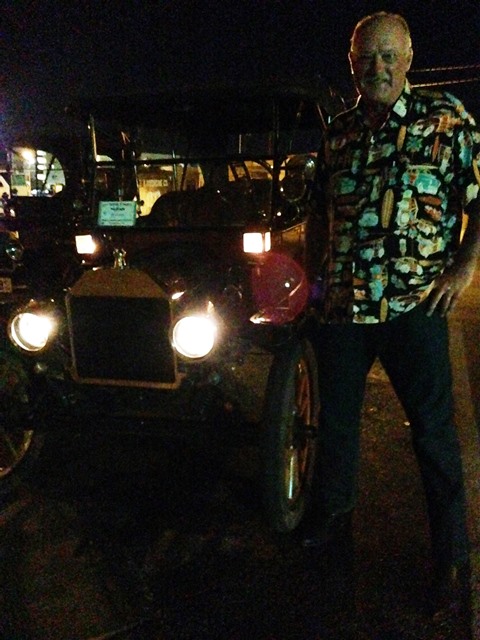Stop driving
...at night.
In a world without electricity, artificial lighting is going to be pretty lousy. Downtown areas will have gas lighting, but outside that core, there will be miles and miles of ordinary residential/light business districts that don't rate gaslights, but still don't want cars tearing through their neighborhoods at 30 mph in the dark.
And while headlights are achievable (though not all that great), taillights present a much harder problem. A light that small will be difficult, especially when it also needs to be more reliable than a headlight - you notice when a headlight goes out. So taillights may be impracticable, and cars would be pitch black aft.
Between the risk of overrunning an unmarked car ahead, and hitting pedestrians, "overdriving your headlights" would be serious business. Governments would impose draconian nighttime speed limits with stiff consequences for night speeding. So driving at night would be deathly slow, to the point of not being worth doing, except to "limp home" at a dreadful pace after an unexpected delay.
This would happen early in the evolution of automobiles, and stick.
Obviously, over the decades things would improve; roads would get better, those outer-urban and suburban neighborhoods would get gas lighting on their major trunk routes (e.g. In your town, all the numbered routes), and limited-access freeways would be built with more liberal nighttime speeds due to absolute prohibition of pedestrians. But that would only help after you get to the freeway. Until then, you're still plotzing along at 10-15 mph on the neighborhood and feeder routes that are 30-45 mph by day. It would be just too tedious. Nobody would have the nerves for it.
Except of course for commercial interests; trucks and buses, which are expensive machines with the best lighting money can buy, would own the night.
Trains and streetcars would also be tip-top. Even in our world, trains always had the best headlights available. In fact, this "ability to move at night" would slow the decline of rail transit. Fair chance the Interurbans are still around, providing swift travel on their limited-access right-of-ways (with a hiking-biking trail alongside to remove the temptation to walk down the tracks). If you were trapped downtown after dark, just as likely you'd leave your car downtown and take the interurban home. No electricity, yes; but the streetcars and interurbans would happen a bit later and have diesels.



